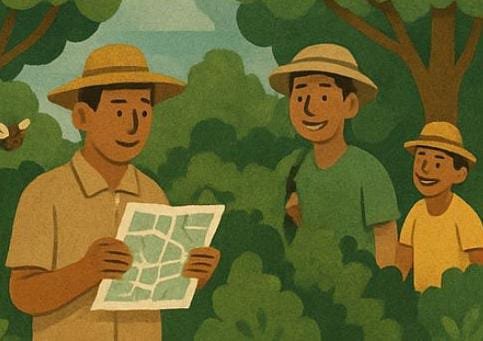
Forest for the People: What is Social Forestry?
Social forestry is a legal scheme that gives communities the right to manage and benefit from forest areas sustainably. This community-based forest management model empowers rural communities, protects forests through local wisdom, and reduces poverty and land conflict.
Types of Social Forestry
There are several models of social forestry, including:
- Hutan Desa (Village Forest)
- Hutan Kemasyarakatan (Community Forestry)
- Hutan Tanaman Rakyat (Community Plantation Forest)
- Kemitraan Kehutanan (Forestry Partnership)
Each model provides a unique approach to community-based forest management, allowing communities to manage and benefit from forest resources in a sustainable way.
How Can Communities Apply?
To apply for social forestry, communities must:
- Form a legal group or cooperative
- Map their forest use area
- Submit to the Ministry of Environment and Forestry (KLHK) through local government or the Online Single Submission (OSS) system
By following these steps, communities can gain legal access to forest areas and manage them sustainably.
Why It Matters
Social forestry matters because it:
- Empowers rural communities to manage their forest resources
- Protects forests through local wisdom and sustainable practices
- Reduces poverty and land conflict by providing communities with a sustainable source of income
Real Success Stories
In West Sumatra, village forests provide income from eco-tourism and honey, while preserving biodiversity. This example demonstrates the potential of social forestry to promote sustainable forest management and community development.
Take Action
Legal access to forest areas is essential for fair and sustainable forest management. By supporting social forestry, we can promote community-based forest management and ensure that forests continue to provide benefits for generations to come. When people protect forests, forests protect people.
